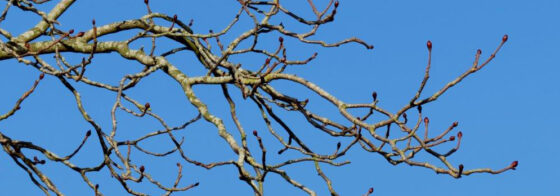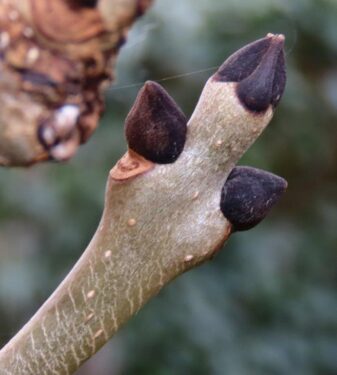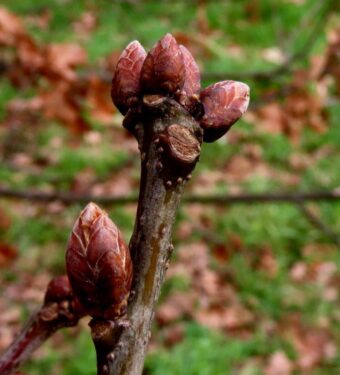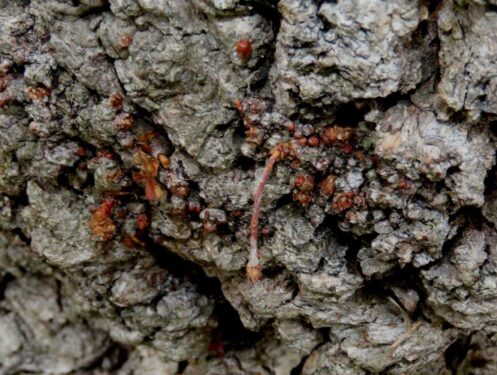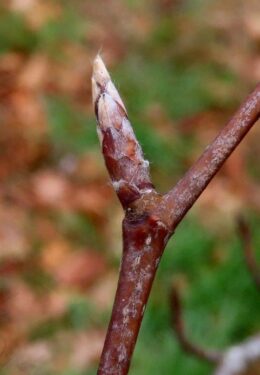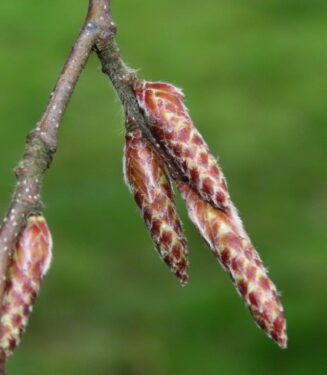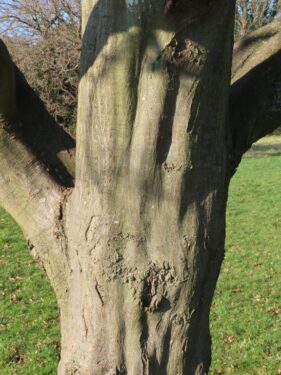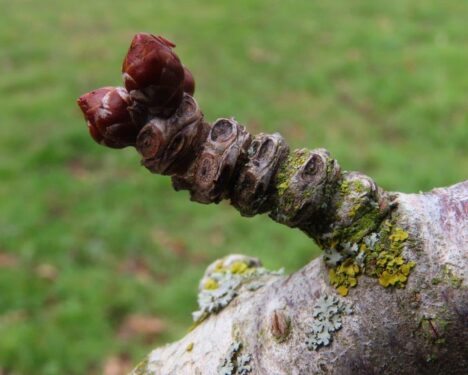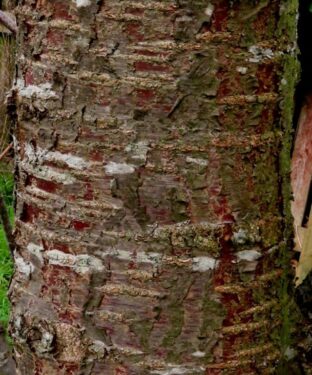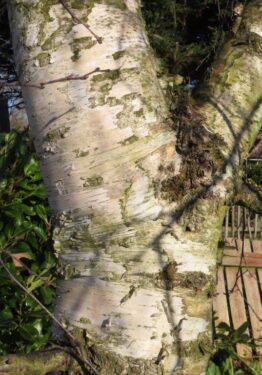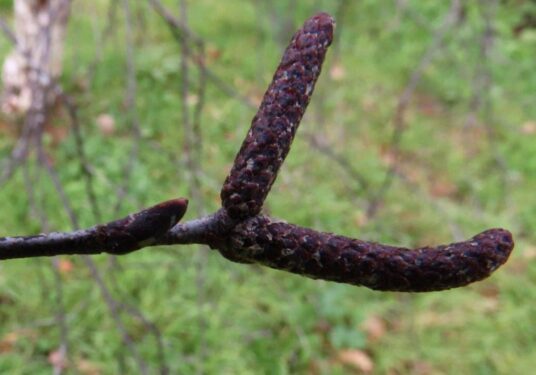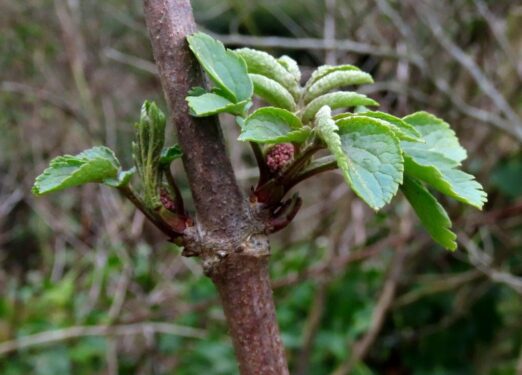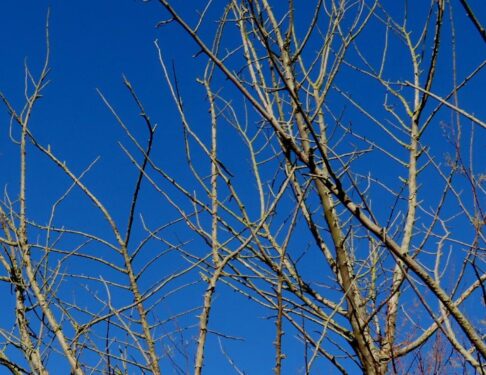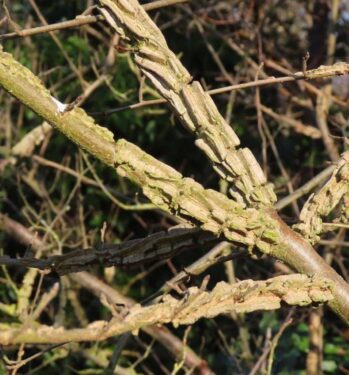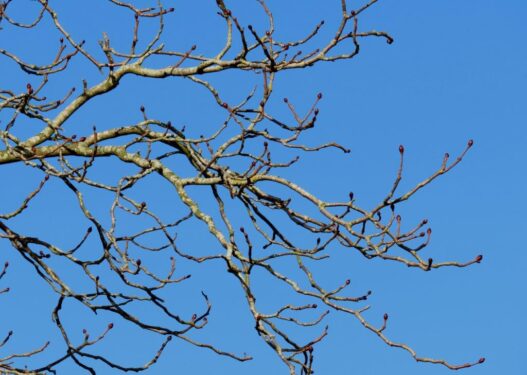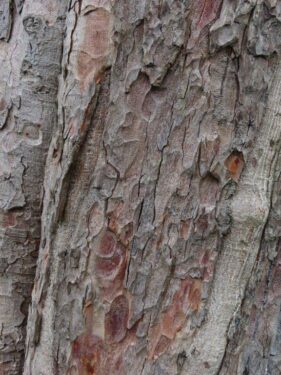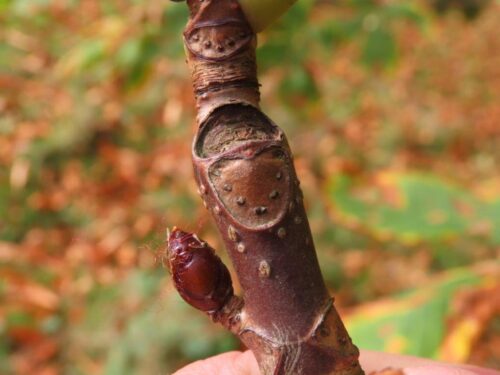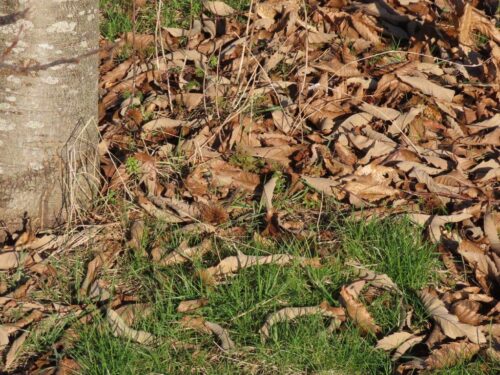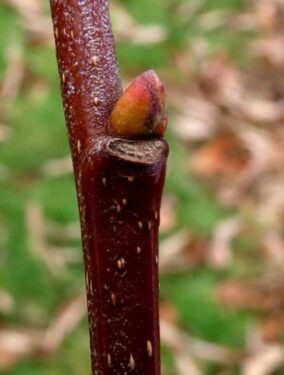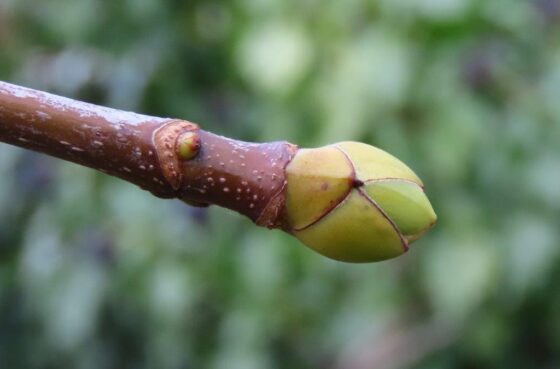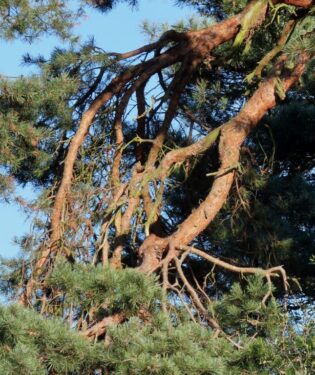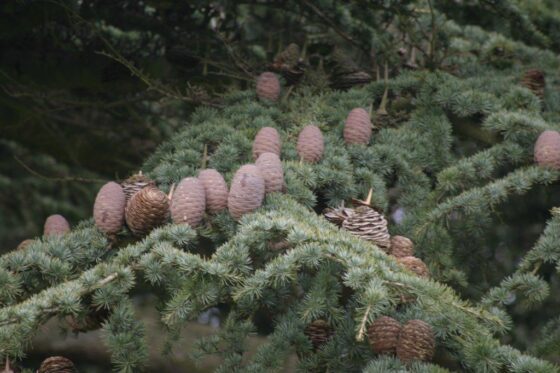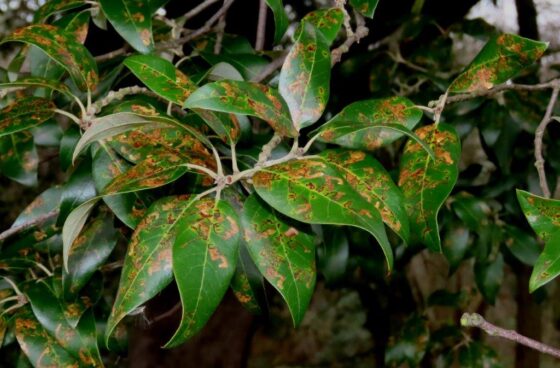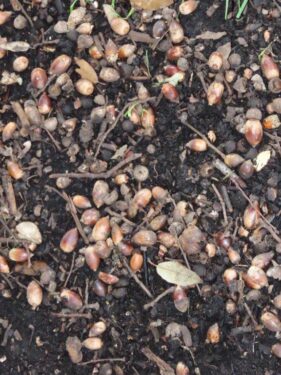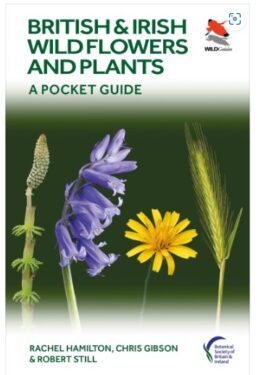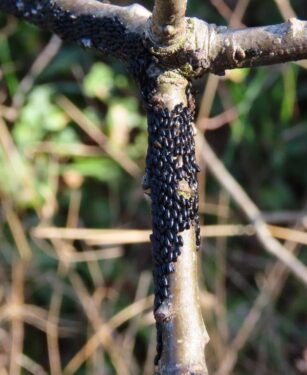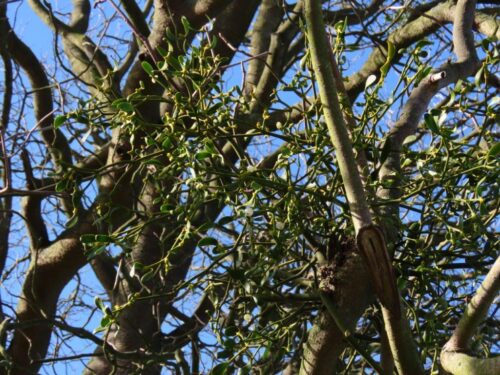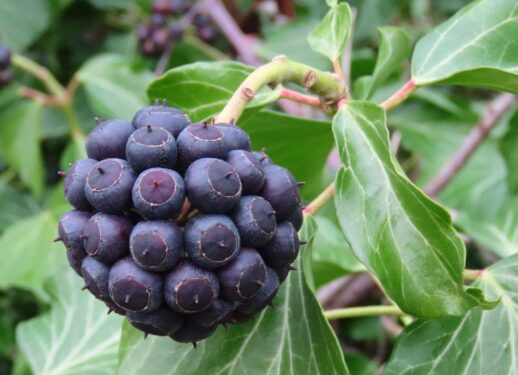A beautiful January day saw an interested group of tree fans on King George V field in Wivenhoe, looking at How to ID Trees in Winter from Bark and Buds. This area is now a well-used and loved playing field/recreation area and wild flower meadow, but was originally the grounds of the former Wivenhoe Hall. This explains the rather formal planting and ‘exotic’ trees in amongst the natives. The clear blue sky was a perfect back drop to clearly see the silhouettes of trees, the shapes of branches and outlines of buds. Together with these pointers, bark patterns and fallen leaves and fruits are useful diagnostic tools when deciding identification of trees at a time of year when leaves and fruits are not visible on the tree itself.
This blog uses photos from last year’s walk, together with some taken today.
ASH – in addition to its unmistakeable black buds, mostly in opposite pairs, with flattened twig tips, Ash also has smooth, pale bark, often covered in lichens, and usually (though not in the specimen we examined) some of the bunches of keys from last summer perched in its boughs.
OAK – the plump, chestnut-coloured buds are clustered at the tips of the twigs that arise from the branches that come from the trunk, which is covered in deeply ridged bark, the fissures more or less continuous, running down the trunk. Sometimes, in older specimens, the trunk is divided, by coppicing or pollarding, especially on old ownership boundaries where distinctive trees were used to define those boundaries legally, by way of a ‘perambulation’; some older specimens are characterized by ‘epicormic growth’ sprouting out of the bark (below, right).
BEECH (below, left) and HORNBEAM (below, middle and right) – the elongate, pointed shape of the buds of these two species is similar, but those of Beech are set at an angle to the twig, while those of Hornbeam are curved into (appressed to) the twig. Beech often has dead leaves still attached in midwinter (Marcescence – Wikipedia), and smooth, silvery bark, with raised lines, rounded in profile, running down it. Hornbeam bark is similarly smooth, but the trunk is usually fluted, like a rippling muscle (indeed it is known as Musclewood in the USA).
And then to three fast-growing, often small species, good at colonising suitable habitats:
WILD CHERRY has clusters of buds borne on short, woody pedestals, and peeling, copper-coloured bark formed into distinct hoops around the trunk…
… while SILVER BIRCH has lovely white bark, delicately drooping branch tips, and often has remnants of last year’s seeding catkins at the same time as the coming summer’s catkins are starting to emerge…
… and ELDER has deeply ridged grey bark, often covered with mosses. It is also the first of our trees to burst into leaf, a true harbinger of Spring.
ELM is often distinguished as much by its dead stems, the victims of Dutch Elm Disease, as by its living features. But on a living trunk, the herringbone branching pattern of the twigs is usually apparent, as often are the main branches clothed in corky wings of bark.
Another tree bedevilled by disease is HORSE CHESTNUT, especially worrying in view of its rarity in its native Caucasus. The big, swollen buds with sticky scales are well known, but the horseshoe-shaped leaf-scars and smooth bark breaking into a patchwork of plates are equally distinctive.
Similar in name, but very different (and completely unrelated), the SWEET CHESTNUT is often noticeable by its halo of dead leaves lying on the ground, as they take several months to decay away. Its plump buds sit on ‘shelves’ on the ridged twigs, and the bark of a small tree is smooth and silvery, in marked contrast to an older tree where the bark is strongly fissured, twisting around the trunk.
One of most distinctive winter trees is SYCAMORE with its smooth, grey bark, large, turgid buds, almost fit to burst, and beautiful bud-scales, edged in maroon and fringed in white
Finally, mention must be made of the evergreens, historic adornments to the grounds of the former Wivenhoe Hall. The red-boughed SCOTS’ PINE (below, left) is one of only three native conifers in Britain, CEDAR-OF-LEBANON (below, right) is another species threatened in its native Middle Eastern home, and HOLM OAK (bottom), native to the Mediterranean basin. The latter is especially noticeable this winter from the crunching underfoot of its acorns, the result of one of its periodic ‘mast years’, perhaps likely to become more frequent in the era of climate collapse.
But the presence of leaves or needles doesn’t necessarily make identification easier: it is always worth getting to know their distinctive fruits, tree shapes and bark. No rest for the botanist, even in midwinter, but help will soon be at hand with the forthcoming ‘British & Irish Wild Flowers and Plants Pocket Guide’, hopefully to be published late Spring/Summer.
And what of wildlife other than the trees? Insects were not the focus today (precious few about in the cold wind!), but were couldn’t help notice rather impressive clutches of shiny black eggs on a twig…we think these are probably eggs of the Black Bean Aphid.
Otherwise, the Mistletoe on a Buckeye tree looked magnificent against its blue backdrop, and the now-ripened berries of Ivy were a reassuring sight for our birds, should this winter still have a sting in its tail…!
